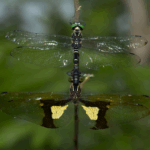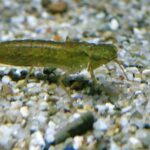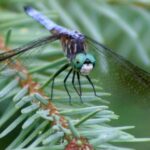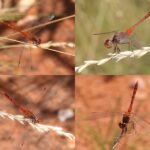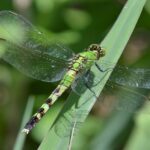Dragonflies are the insects belonging to the order Odonata and are very frequently found in the gardens and the children are also seen running after them in order to catch them. They are characterized by the presence of large multifaceted eyes, two pairs of strong, transparent wings and elongated bodies. Dragonflies resemble damselflies but the adults can be differentiated by the position of wings. Adults keep their wings in a perpendicular direction when at rest. They have six legs but majority of the species are not able to walk properly. They are very valuable predators of mosquitoes, flies, bees, insects and very rarely butterflies. They are frequently observed hovering around the ponds, streams and wetlands because their larval stage known as naiads are aquatic. They have got their name from a Greek word meaning unequal wings as their hind wings are broader than the fore wings.
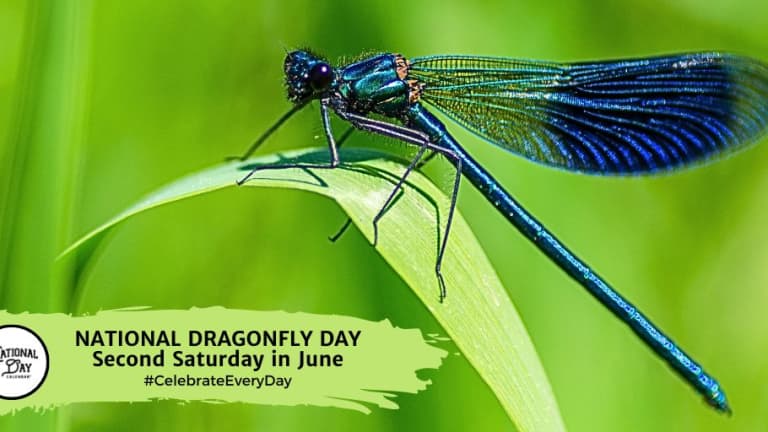
Here are some common questions about dragonflies:
What do dragonflies eat?
Adult dragonflies mostly eat other flying insects, particularly midges and mosquitoes. They also will take butterflies, moths and smaller dragonflies. The larvae, which live in water, eat almost any living thing smaller than themselves. Larger dragonfly larvae sometimes eat small fish or fry. Usually they eat bloodworms or other aquatic insect larvae. Read more about dragonfly feeding behavior >
How do dragonflies mate?
Romance and courting have no place in the dragonfly mating ritual. In fact, it is a bit violent and somewhat unsettling. However, dragonflies must be doing something right, as they have existed for over 300 million years. Read more about dragonfly mating >
How fast can a dragonfly fly?
It is estimated that the top speed for a dragonfly is between 36 and 54 km/h (22 to 34 m.p.h.). The maximum speed varies a lot between different species, with bigger dragonflies generally flying faster than smaller ones. Read more about dragonfly flight >
How fast do they beat their wings?
Not fast, about 30 times per second (compared to bees, for example, at 300 beats per second). However, dragonflies have two sets of wings, so they don’t have to beat them so fast. Read more about dragonfly wings >
What is the life cycle of a dragonfly?
Dragonflies embark on a fasinating journey from the egg stage to the adult stage. Learn more about this transformative process that has withstood the test of time, 300 million years and counting!
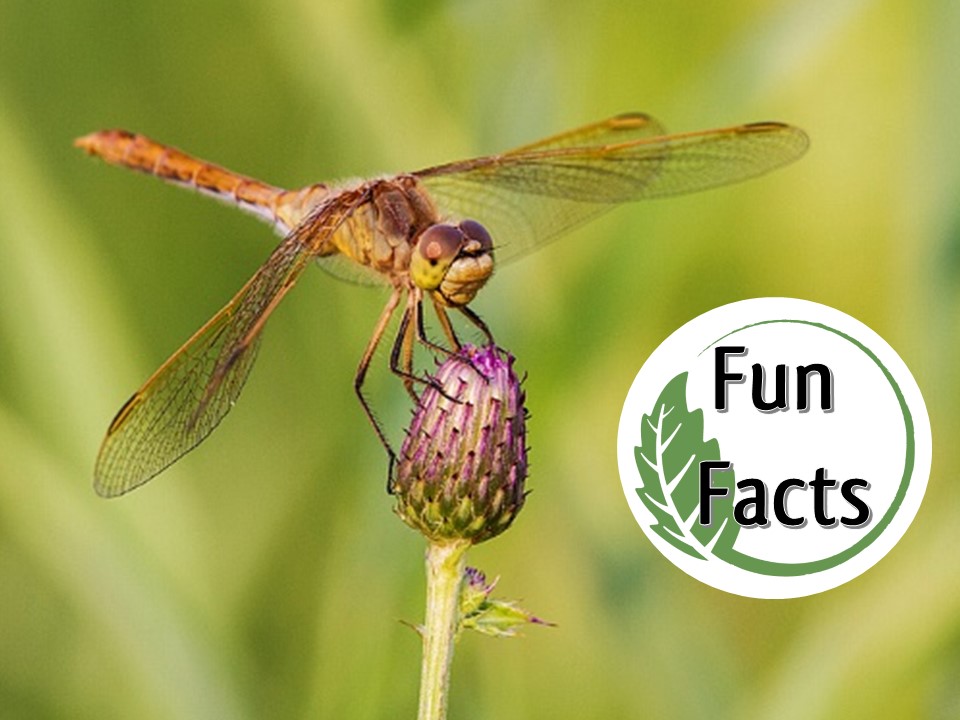
What is the origin of the word “dragonfly”?
The origin of the English term “dragonfly” is believed to come from the Romanian language where the word for dragonfly translates to Devil’s Horse or Devil’s fly. The word drac, from the Latin draco, means “dragon” or “devil” in several languages, such as Catalan and Romanian. So the Romanian Devil’s fly has become dragonfly in English! Learn more about some really cool dragonfly symbolism in Europe and Japan. The legends and folktails will surprise you!
How many kinds of dragonflies and damselflies are there?
Currently about 5000 species of dragonflies and damselflies are known; experts guess that there are probably between 5500 and 6500 species in total. Click here for resources to identify dragonflies in your neighborhood.
How long do they live?
Most temperate-zone species live as adults less than a month, though some species can live as long as six months. Check out our dragonfly life cycle article for more information.
What enemies do dragonflies and damselflies have?
Birds, spiders, frogs, larger dragonflies. In the larval stage, they are preyed on by fish, frogs, toads and newts, and other water invertebrates.
How can I tell a dragonfly from a damselfly?
Damselflies are usually slim, their forewings and hindwings narrow at the base and have similar shapes, and their eyes are widely separated. Most species hold their wings above the abdomen when they are resting. Dragonflies are larger. Their eyes touch near the top of their head. The wings do not narrow at the base; the forewings and hindwings differ in shape. When they are resting, the wings are usually spread.
What are the biggest dragonfly and damselfly?
The Megaloprepus coerulatus damselfly of Central America has a wingspan up to 19 cm. The bulkiest known dragonfly is Petalura ingentissima from Australia, with a wingspan up to 16 cm. Extinct fossil dragonflies with wingspans up to 70-75 cm have been identified.
What is the smallest dragonfly?
Several dragonflies in the genus Agriocnemis have a wingspan of just 17-18 mm. (7/10 inch).
How strong are their eyes?
A dragonfly can see all the way around itself, because its eyes have about 30,000 lenses. However, the human eye with only one lense can see more sharply, though only front and sides.
How long have dragonflies been around?
About 300 million years. Huge dragonflies, with wing spans up to 30 inches, were flying when dinosaurs roamed the earth.
Where do dragonflies live?
Dragonflies start their life in water, therefore they are often found near water: ponds, lakes, canals, streams, rivers and swamps. Some dragonflies with a short larvae cycle (a few weeks) also can live in rain puddles. Since dragonflies are very good flyers they can sometimes be found a very long way from water.
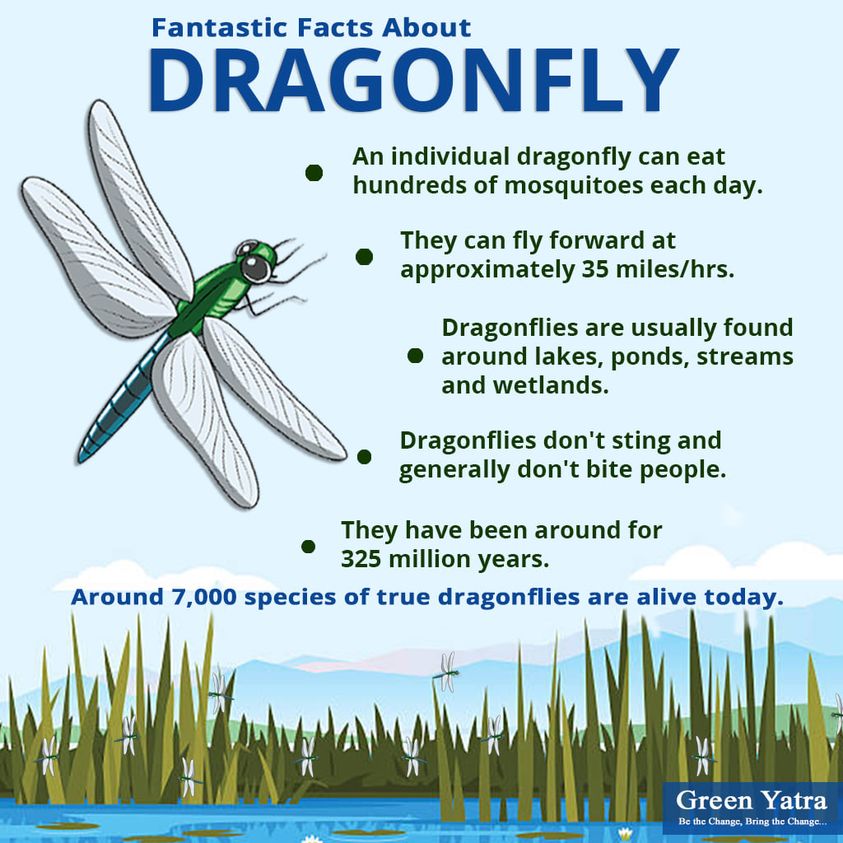
Do dragonflies bite?
The quick, rational answer to this question is NO, don’t worry about it. Just appreciate how many mosquitoes they eat for us! Dragonflies do not have teeth – they use their very strong mandibles to eat their prey. To the insect world, they are considered verocious predators, but most species would not be able to break through human skin. Dragonflies are not aggressive towards humans. Just like any other animal, if they feel you are trying to harm them, they may use their mandibles to try to stop you. So if a dragonfly lands on you, consider yourself lucky and just stay still while enjoying the close interaction which will inevitably be short-lived.
Do dragonflies sting?
Dragonflies do not have stingers; females have tiny clasps at the ends of their abdomens used in the egg-laying process. They act like tiny little blades that she uses to incise an opening in plant material in which she’ll insert her eggs. Therefore, they do not sting. However, researchers have seen that dragonflies who have been interupted during their egg-laying, continued their process into the clothing or skin of the handlers due to mistaken identity. So it is possible for a female to mistake your leg for some nice plant materials, but this is very rare.
Do dragonflies migrate?
Some, such as the green darner in New Jersey migrate short distances – averaging about 7-1/2 miles per day, and generally moving every third day. On the other hand, the globe skinner migrates the farthest of any insect, about 11,000 miles across the Indian Ocean.
Where can I buy books, field guides, and other information about dragonflies and damselflies?
Check out our online shopping guide.
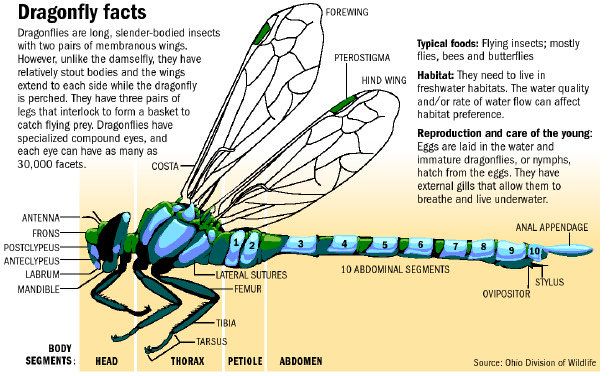
Dragonfly facts for kids
Dragonflies are flying insects of the order Odonata. There are about 5,300 species of dragonfly. The adults eat other flying insects.
Dragonflies have large compound eyes, which is their main sense organ. They have four strong transparent wings, and a long body. Even though dragonflies have six legs (like any other insect), they cannot walk.
Dragonflies are usually found around lakes, ponds, streams and wetlands. They are predators which eat mosquitoes, and other small insects such as flies, bees, ants, and butterflies. Their larvae, known as ‘nymphs’, are aquatic.
Dragonflies have been around for 300 million years. In the Carboniferous period, some species had wing-spans of over 2 ft (61 cm).
Dragonflies and damselflies
Dragonflies are in one suborder of the Odonata, and their relatives, the damselflies, are in another suborder. Many people mistake the damselfly for the dragonfly, because they look alike.
Adult damselflies have thinner, more delicate bodies than those of dragonflies. This you can see even when they are flying. When at rest, most damselflies hold their wings together above the body. Most dragonflies hold their wings horizontally. The eyes of dragonflies are larger, and touch each other.
Reproduction
Female dragonflies lay eggs in or near water, often on plants. When laying eggs, some species go under the water to lay their eggs on a good surface. The eggs then hatch into nymphs. While in the nymph stage they eat mosquito larvae and other things.
Most of a dragonfly’s life is spent in the nymph form, beneath the water’s surface. It is quite active. It can extend its jaws in front of its mouth to catch prey. Tiny vertebrates such as tadpoles and fish are part of its diet. Some nymphs even hunt on land. They draw water in and out of their rectum. They can move fast by squirting water out of the anus. They also have gills in their rectum.
Larvae
The larval stage of large dragonflies may last as long as five years. In smaller species, this stage may last between two months and three years. When the larva is ready to metamorphose into an adult, it climbs up a reed or other emergent plant. Exposure to air causes the larva to begin breathing. The skin splits at a weak spot behind the head and the adult dragonfly crawls out of its old larval skin, pumps up its wings, and flies off to feed on midges and flies. The adult stage of larger species of dragonfly can last as long as five or six months.
Dragonflies experience incomplete metamorphosis: the nymphs (called naiads) swim and live underwater, like fish. The female dragonfly lays her fertilized eggs near or right in the water. The naiads – which do not look much like dragonflies at all – hatch and immediately take to the water.
While living in the water, the naiads eat as many aquatic insects as possible, as well as other small creatures like tadpoles and minnows. Hidden among the plants, a naiad will lie in wait for prey to swim by. It can then squeeze water out of the rear of its abdomen like a jet stream. This moves the naiad forward very quickly, allowing it to snatch its prey with its powerful jaws. Some naiads even have a long lower jaw that can shoot out and grab prey.
Naiads live in the water for weeks (or even years in some species) and undergo a series of moults to grow. When a naiad is ready for its final moult, it finds a stick or other object sticking out of the water. It use this to crawl out of the water, and wait for its exoskeleton to dry. As the exoskeleton cracks open at the seam, the adult dragonfly crawls out.
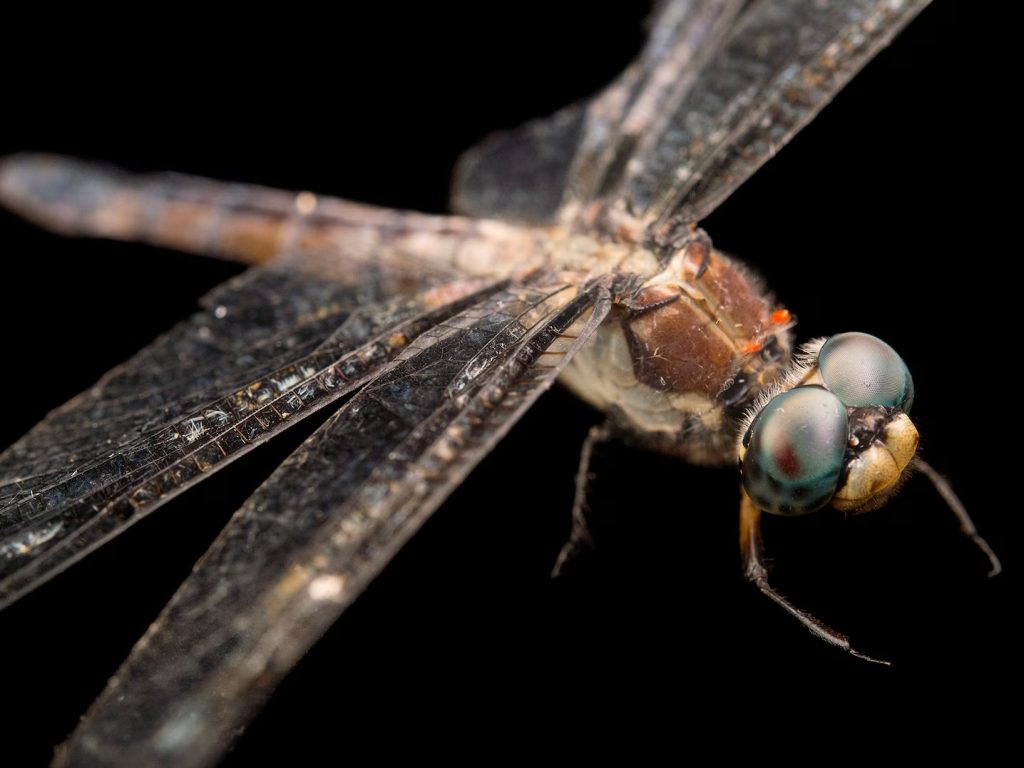
Adults
Eyesight
Dragonflies have tremendous eyesight. Their compound eyes are very large and have up to 50,000 individual lenses. Their eyes wrap around the top of the head. As a result, they have a wide field of vision: they can see almost everywhere at once. Sight is by far their most important sense, used to catch flies and avoid birds.
Flight
In flight the adult dragonfly can move in six directions; upward, downward, forward, back, and side to side. They can also hover quite well in midair, and then they can take off at speeds of up to 35 mph (56 km/h). Scientists discovered dragonflies can move each of their four wings independently which gives them their flying abilities. Dragonflies bend and twist their wings to cause little whirlwinds that move the air even faster over the upper part of the airfoil, reducing air pressure even more than most flying animals can. This gives them a lot of lift, even in the face of powerful winds.
The flight style of different families of dragonfly is one of their distinguishing features. It gives rise to some terms which are widely used by dragonfly observers:
Hawkers (family Aeshnidae). They are among the largest and fastest flying dragonflies. The adults live mostly in the air, and even mate in flight. They have large and powerful wings, and can fly forwards or backwards or hover like a helicopter. The wings are always extended horizontally.
Skimmers or perchers are the very large family Libellulidae. There are several flight styles amongst its genera. The genus Sympetrum lives in the northern hemisphere and has 50 species. It breeds in ponds and searches over meadows. There are at least 100 other genera.
Cruisers (family Macromiidae). They usually fly over bodies of water (and roads) straight down the middle. They have green eyes which just barely meet at the top of the head. Females of this family lack an ovipositor at the end of the abdomen and lay their eggs by dipping the abdomen in the water as they fly over.
Thermoregulation
Some dragonflies change their resting position to prevent overheating. They may use a handstand-like position to prevent overheating on sunny days. The abdomen is raised until its tip points at the sun, minimizing their surface area exposed to the heat. The position is called the obelisk posture. The species that do this are called ‘perchers’; they are “sit and wait” predators which spend much of their time keeping still.
In culture
A blue-glazed faience dragonfly amulet was found by Flinders Petrie at Lahun, from the Late Middle Kingdom of ancient Egypt.
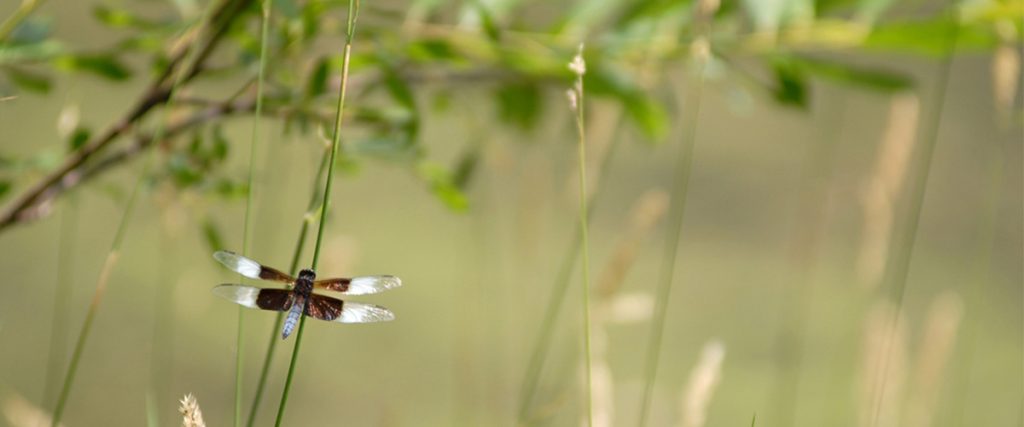
For some Native American tribes, dragonflies represent swiftness and activity; for the Navajo, they symbolize pure water. They are a common motif in Zuni pottery; stylized as a double-barred cross, they appear in Hopi rock art and on Pueblo necklaces. They have been used in traditional medicine in Japan and China. In Indonesia, adults are caught on poles made sticky with birdlime, then fried in oil as a delicacy.
In the United States, dragonflies and damselflies are sought out as a hobby similar to birding and butterflying, known as oding, from the Latin name of the dragonfly order, Odonata. Oding is especially popular in Texas, where 225 different species of odonates have been observed. With care, and with dry fingers, dragonflies can be handled and released by oders, as can be done with butterflies, though it is not encouraged.
Images of dragonflies are common in Art Nouveau, especially in jewellery designs. They have also been used as a decorative motif on fabrics and home furnishings. Douglas, a British motorcycle manufacturer based in Bristol, named its innovatively designed postwar 350-cc flat-twin model the Dragonfly.
Among the classical names of Japan are Akitsukuni, Akitsushima, Toyo-akitsushima. Akitu or akidu are archaic or dialectal Japanese words for dragonfly, so one interpretation of Akitsushima is “Dragonfly Island”. This is attributed to a legend in which Japan’s mythical founder, Emperor Jinmu, was bitten by a mosquito, which was then eaten by a dragonfly.
As a seasonal symbol in Japan, the dragonfly is associated with autumn. More generally, dragonflies are symbols of courage, strength, and happiness, and they often appear in art and literature, especially haiku. Japanese children catch large dragonflies as a game, using a hair with a small pebble tied to each end, which they throw into the air. The dragonfly mistakes the pebbles for prey, gets tangled in the hair, and is dragged to the ground by the weight.
In Europe, dragonflies have often been seen as sinister. Some English vernacular names, such as “horse-stinger”, “devil’s darning needle”, and “ear cutter”, link them with evil or injury. Swedish folklore holds that the devil uses dragonflies to weigh people’s souls. The Norwegian name for dragonflies is Øyenstikker (“eye-poker”), and in Portugal, they are sometimes called tira-olhos (“eyes-snatcher”). They are often associated with snakes, as in the Welsh name gwas-y-neidr, “adder’s servant”. The Southern United States term “snake doctor” refers to a folk belief that dragonflies follow snakes around and stitch them back together if they are injured.

